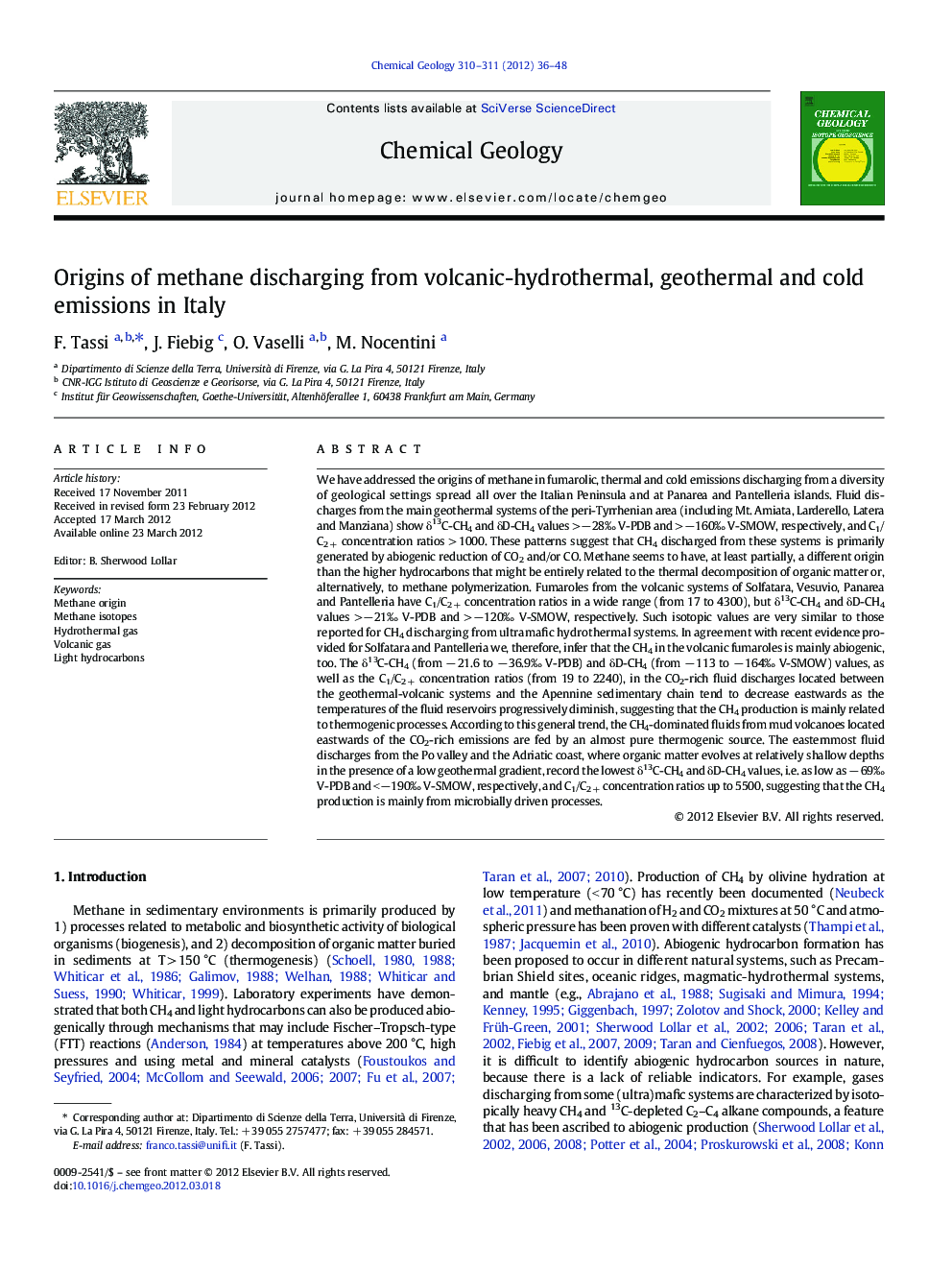| کد مقاله | کد نشریه | سال انتشار | مقاله انگلیسی | نسخه تمام متن |
|---|---|---|---|---|
| 4699415 | 1637645 | 2012 | 13 صفحه PDF | دانلود رایگان |

We have addressed the origins of methane in fumarolic, thermal and cold emissions discharging from a diversity of geological settings spread all over the Italian Peninsula and at Panarea and Pantelleria islands. Fluid discharges from the main geothermal systems of the peri-Tyrrhenian area (including Mt. Amiata, Larderello, Latera and Manziana) show δ13C-CH4 and δD-CH4 values >−28‰ V-PDB and >−160‰ V-SMOW, respectively, and C1/C2 + concentration ratios > 1000. These patterns suggest that CH4 discharged from these systems is primarily generated by abiogenic reduction of CO2 and/or CO. Methane seems to have, at least partially, a different origin than the higher hydrocarbons that might be entirely related to the thermal decomposition of organic matter or, alternatively, to methane polymerization. Fumaroles from the volcanic systems of Solfatara, Vesuvio, Panarea and Pantelleria have C1/C2 + concentration ratios in a wide range (from 17 to 4300), but δ13C-CH4 and δD-CH4 values >−21‰ V-PDB and >−120‰ V-SMOW, respectively. Such isotopic values are very similar to those reported for CH4 discharging from ultramafic hydrothermal systems. In agreement with recent evidence provided for Solfatara and Pantelleria we, therefore, infer that the CH4 in the volcanic fumaroles is mainly abiogenic, too. The δ13C-CH4 (from − 21.6 to − 36.9‰ V-PDB) and δD-CH4 (from − 113 to − 164‰ V-SMOW) values, as well as the C1/C2 + concentration ratios (from 19 to 2240), in the CO2-rich fluid discharges located between the geothermal-volcanic systems and the Apennine sedimentary chain tend to decrease eastwards as the temperatures of the fluid reservoirs progressively diminish, suggesting that the CH4 production is mainly related to thermogenic processes. According to this general trend, the CH4-dominated fluids from mud volcanoes located eastwards of the CO2-rich emissions are fed by an almost pure thermogenic source. The easternmost fluid discharges from the Po valley and the Adriatic coast, where organic matter evolves at relatively shallow depths in the presence of a low geothermal gradient, record the lowest δ13C-CH4 and δD-CH4 values, i.e. as low as − 69‰ V-PDB and <−190‰ V-SMOW, respectively, and C1/C2 + concentration ratios up to 5500, suggesting that the CH4 production is mainly from microbially driven processes.
► We present original isotopic data (CH4 and CO2) in natural gas discharges of Italy.
► We investigate the origins and mechanisms of CH4 production in natural systems.
► Methane in fluids from volcanic/geothermal systems is mainly abiogenic.
► Hydrothermal fluids of medium enthalpy have thermogenic CH4.
► Biogenic CH4 dominates in fluids from the Po Plain and the Adriatic coast.
Journal: Chemical Geology - Volumes 310–311, 5 June 2012, Pages 36–48